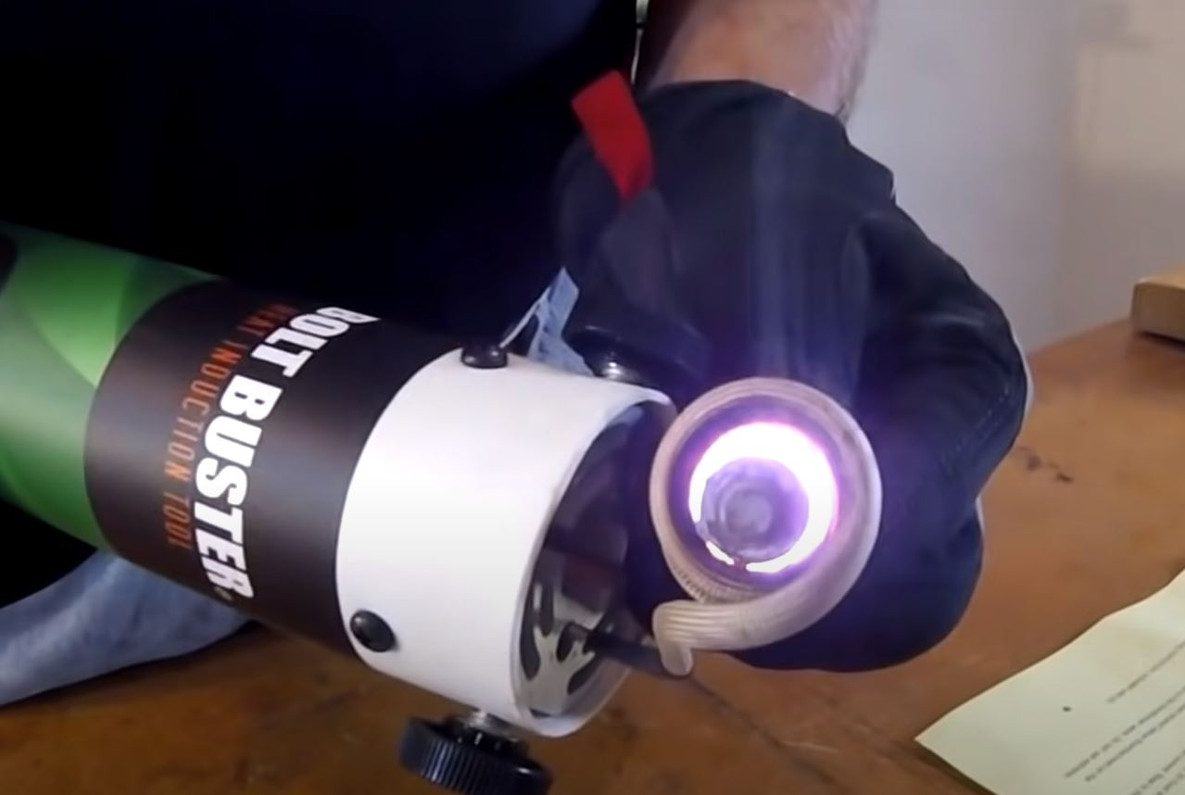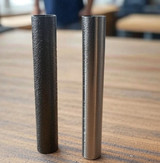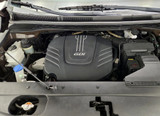Creative and Practical Uses of Induction Tools in Automotive Repair
Wise Auto Tools: While there are many practical uses for induction tools in automotive repair and reconditioning, there are also some more creative ways these tools have been used. One of the strangest uses of an induction tool is for removing dents from musical instruments.
In one example, a professional saxophone repairman used an induction tool to remove a dent from a saxophone bell. By heating the metal in the area of the dent, he was able to soften the metal and gently massage the dent out from the inside of the bell, without damaging the delicate brass material.
Another unusual use of an induction tool is for repairing damaged guitar necks. The tool can be used to heat and soften the glue holding the neck to the body of the guitar, allowing for easier removal and repair. The tool can also be used to heat and straighten bent guitar necks, without damaging the fretboard or other delicate components. Now that's pretty crazy! The induction tool works by generating heat through electromagnetic induction in metal objects. So, the guitar neck must contain a metal component for the tool to work. The metal component can be a truss rod or a metal plate embedded in the neck. The heat generated by the induction tool can then be used to soften the glue holding the neck to the body of the guitar or to straighten a bent neck. So, obviously this would not work on a guitar that is all wood.
Follow this link for the product listing. BB2X-ACC Bolt Buster 1800 Heat Extract Tool
Read on to learn about what induction heating tools are, how they work and the most common uses for induction tools in automotive repair industry.
Question - What is an induction tool?
An induction tool, also known as an induction heater or induction heating system, is a device that uses high-frequency magnetic fields to generate heat in metal objects. The tool consists of a power source that produces the high-frequency alternating current, a work coil that generates the magnetic field, and a controller that regulates the output of the power source.
When the work coil is placed near a metal object, the alternating current flowing through the coil generates a magnetic field that induces eddy currents in the metal. These eddy currents generate heat through resistance, causing the metal to heat up rapidly. The process is similar to the way a transformer works, but instead of stepping up or down voltage, the induction tool generates heat.
Question - I can't believe I'm asking this but what is an "eddy current"?
Eddy currents are electrical currents that circulate within conductive materials when they are exposed to a changing magnetic field. They are named after the physicist Leon Foucault, who discovered them in the mid-19th century.
When a magnetic field changes in strength or direction, it induces a flow of electrical current in nearby conductive materials. These eddy currents create their own magnetic field, which opposes the original magnetic field and produces heat in the process. This phenomenon is called electromagnetic induction, and it is the same principle that is used in transformers and induction heating tools.
Eddy currents can have both positive and negative effects. In some cases, they can be harnessed for useful applications, such as induction heating for metalworking, or for levitation in magnetic trains. However, in other cases, they can cause unwanted heating, energy losses, or other forms of interference in electrical systems.
Question - Whoa, electrical damage? Can the Inductor harm a car’s computer?
Induction heating tools, including Inductors, generate heat using high-frequency magnetic fields. While these magnetic fields can cause some electromagnetic interference, it is unlikely to harm a car's computer. Modern car computers are designed to be resistant to electromagnetic interference, and the small amount of interference generated by an induction tool is not typically strong enough to cause any damage.
However, it's still a good idea to take precautions when using an induction tool around a car's computer or other sensitive electronic components. You should avoid placing the tool too close to these components, and try to shield them from the magnetic field as much as possible. If you're unsure about how to use an induction tool safely around a car's computer.
Question - I think I know but what's the advantage of using an induction tool rather than an acetylene torch for automotive repair?
Using an induction tool instead of an acetylene torch for automotive repair offers several advantages:
Safety: Induction tools use high-frequency magnetic fields to generate heat, which means there's no open flame. This reduces the risk of fire and explosion, making induction tools safer to use than acetylene torches.
Precision: Induction tools allow for more precise heating and can target a specific area without affecting the surrounding material. This is especially important when working on delicate or complex parts, such as electronic components or wiring.
Time-saving: Induction tools can heat metal much faster than acetylene torches, which can save time during the repair process. They also don't require as much setup time, which can further reduce overall repair time.
Cost-effective: Induction tools can be more cost-effective over time because they don't require the ongoing expense of fuel, like an acetylene torch does. They also typically require less maintenance than torches and have a longer lifespan.
Here are some more common questions that auto technicians may have when it comes to purchasing and using an induction tool for car repair:
Question - What kind of power source does the induction tool require?
Induction tools require a power source to generate the high-frequency magnetic field. Some models may require a standard 110V electrical outlet, while others may require a higher voltage outlet. It's important to check the specifications of the tool before purchasing to ensure it will work with your power source.
Question - What materials can an induction tool be used on? Induction tools can typically be used on a variety of metal materials, including steel, aluminum and copper. However, some materials may not be suitable for induction heating, so it's important to check the manufacturer's guidelines and apply common sense before use.
Question - How do I use an induction tool safely?
While induction tools are generally safer to use than acetylene torches, they still require proper safety precautions. It's important to wear appropriate personal protective equipment, such as heat-resistant gloves and eye protection and to follow the manufacturer's instructions for use carefully.
Question - What types of car repairs can an induction tool be used for?
Induction tools can be used for a variety of car repairs, including removing stuck bolts and bearings, straightening metal panels and repairing exhaust systems. However, some repairs may require a more specialized tool or technique, so it's important to understand the limitations of the tool before use.
Question - What should I look for when purchasing an induction tool?
When purchasing an induction tool, it's important to consider if you want 110V or 220V. Also, factors such as power output, portability, and durability.
Question - How practical are these tools for removing dents?
Induction tools can be used to remove dents from a car without even damaging the paint, but it requires some skill and experience. When using an induction tool for dent removal, the goal is to heat the metal around the dent just enough to make it more pliable and easier to manipulate, without causing damage to the paint. Paint melts around 390 degrees!
The process involves heating the metal around the dent using the induction tool, and then using special tools to gently massage the metal back into shape. The process may need to be repeated several times, heating the metal gradually and gently to avoid causing damage to the paint or the surrounding area.
It's important to note that not all dents can be removed using this method, and some may require additional techniques or tools for successful repair. It's also important to follow the manufacturer's instructions for use carefully, and to use appropriate safety equipment to protect yourself and others.
Question - Can an induction tool be used for removing vinyl graphics or trim moldings that are attached with adhesive?
Yes, an induction tool can be used to remove trim moldings that are attached with double-sided adhesive or vinyl graphics. The induction tool can be used to heat the metal trim underneath the adhesive, causing the adhesive to soften and release its grip on the trim. The adhesive generally melts around 250F degrees and paint melts around 390F. This can make it easier to remove the trim or vinyl graphic without damaging it or the surrounding surface.
However, it's important to note that not all double-sided adhesive tapes are created equal, and some may be more resistant to heat than others. It's also important to be careful when using an induction tool around plastic or other heat-sensitive materials that may be in close proximity to the trim molding. In these cases, it may be necessary to use additional tools or techniques to safely remove the trim without causing damage. If you're unsure about using an induction tool for dent removal or any other type of automotive repair, it's always a good idea to seek the advice.
Here at Wise Auto Tools, our goal is to inform and provide guidance on the best tools and techniques for the job. We help you FIX MORE!
Recent Posts
-
Debunking Myths: Is Stainless Steel Just Carbon Steel with Rust Protection?
Hello, I'm Dennis Bandy, owner of Wise Auto Tools and a Master Automotive Technician with many years …15th Jul 2025 -
Head Bolt Stripping in Kia and Hyundai Engines: How Common Is It and How to Fix It
A customer recently emailed us with a great question: “What percent of Kia vehicles would you …9th Jul 2025 -
Pentastar 3.6L Head Bolt Thread Repair on a Budget
We recently received a great question from Michael, a DIYer facing a common problem of stripped thre …19th Mar 2025




